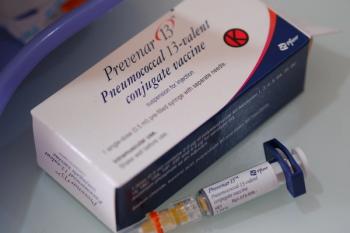
COPD Exacerbations Common in Patients Not Treated With Controller Medications
A study found that although the number of patients receiving a controller medication increased after their first exacerbation, the percentage given controller medications remained below 50% among the overall population.
A retrospective study published in the International Journal of Chronic Obstructive Pulmonary Disease found that chronic obstructive pulmonary disease (COPD) exacerbations often occurred in patients not treated with controller medications, but less than half of patients in the study received controller medications, even after exacerbations.1
Treatments for COPD include bronchodilators like long-acting β2-agonists (LABA), antimuscarinic drugs such as long-acting muscarinic antagonists (LAMA), and anti-inflammatory agents like inhaled corticosteroids (ICS).
“The Global Initiative for COPD (GOLD) clinical management guidelines recommend escalation to triple therapy (ICS/LABA/LAMA) for patients with COPD who experience persistent symptoms or exacerbations despite dual therapy with LAMA/LABA or ICS/LABA,” the authors wrote.
The researchers noted that triple therapy (ICS/LABA/LAMA) helps to improve lung function, decrease exacerbation rates in those with prior exacerbations, and improve quality of life in patients with COPD. They added that the availability of a single-inhaler triple therapy (SITT) in recent years may potentially improve treatment adherence and outcomes.
Still, there is limited literature on treatment patterns of patients with COPD since the transition from multiple-inhaler triple therapy (MITT) to once-daily SITT in 2017. Consequently, the researchers conducted this study to evaluate treatment patterns for COPD before and after exacerbations in the real-world setting.
The study used medical and pharmacy claims data and enrollment information from the Optum Clinformatics Data Mart database from September 18, 2016, to September 30, 2020. Study participants included patients aged 40 years or older who had 1 or more COPD exacerbations during the study period. The baseline period was 12 months prior to the index date, which was defined as the last day of the first COPD exacerbation.
Researchers followed up for at least 3 months after the index date until the earliest date of either death, end of data availability, or health plan cancellation. Clinical characteristics and baseline demographics were assessed from 12 months before the index date, and treatment patterns were evaluated during the baseline and follow-up periods with a focus on medication switching in the 90 days before and after the index date.
Of the 307,727 patients included in the study, 125,942 (40.9%) had severe exacerbations and 181,785 (59.1%) had moderate exacerbations. Additionally, 111,373 (36.2%) patients had a second exacerbation and 49,381 (16.2%) had a third exacerbation. The mean age at index exacerbation was 72.8 years, and 56.3% of the population were female. The most common comorbidities were hypertension (82.3%), cardiac arrhythmias (39.8%), and diabetes (38.2%). The authors also highlighted that comorbidities and healthcare costs were worse among patients that experienced a severe exacerbation.
In terms of medication, 84,615 (27.5%) patients were given at least 1 controller medication during the 90 days pre-index exacerbation. The medication classes dispensed included ICS/LABA (48.2%), LAMA (16.0%), and ICS/LAMA/LABA (15.9%). At 90 days post index exacerbation, 64.3% of patients remained within the same medication class, 21.7% discontinued medication, and 14.1% switched medications. Among patients who switched medications, 44.0% switched to triple therapy, 21.9% switched to ICS/LABA, and 16.7% switched to LAMA.
Overall, the researchers found that many COPD exacerbations occurred in patients not treated with controller medications. Although the number of patients receiving a controller medication increased after their first exacerbation, the researchers noted that the percentage of patients given controller medications remained below 50% among the overall population. Also, despite GOLD guidelines, the researchers highlighted that only a small portion of patients receiving controller medications pre-exacerbation escalated to triple therapy post exacerbation.
The authors noted several study limitations, one being that just because a medication was dispensed did not mean the patient took it as prescribed on that date. Another was that medical events not resulting in an insurance claim were excluded from the data, meaning the results have limited generalizability to those in the US with no insurance or other types of public insurance.
They concluded by explaining that their findings regarding the number of COPD exacerbations among patients not treated with controller medications “may help inform healthcare providers when considering the use of controller therapy among patients with evidence of exacerbation, in line with guideline recommendations.”
Reference
1. Bogart M, Germain G, Laliberté F, Lejeune D, Duh MS. Real-world treatment patterns and switching following moderate/severe chronic obstructive pulmonary disease exacerbation in patients with commercial or Medicare insurance in the United States. Int J Chron Obstruct Pulmon Dis. 2023;18:1575-1586. Doi:10.2147/COPD.S398816
Newsletter
Pharmacy practice is always changing. Stay ahead of the curve with the Drug Topics newsletter and get the latest drug information, industry trends, and patient care tips.















































































































